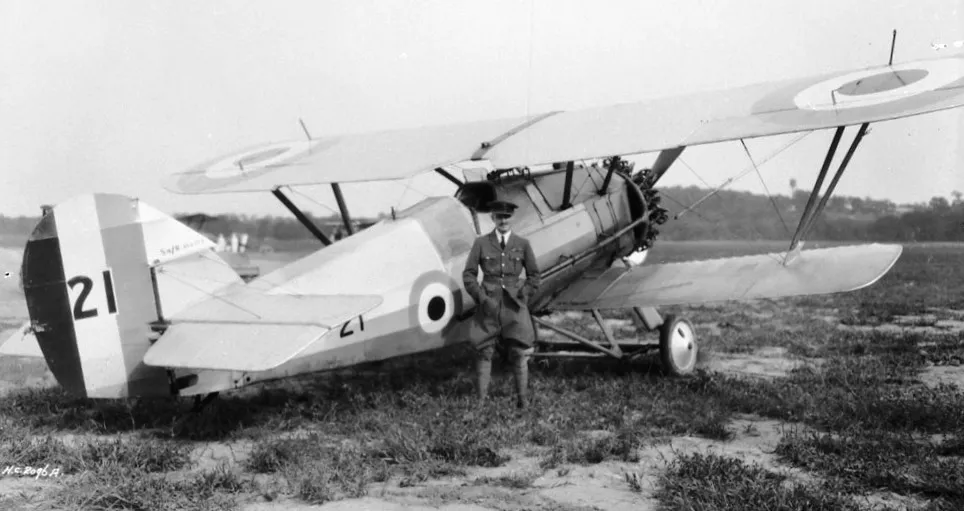Hewson, Henry Willis (Flight Lieutenant)
Killed in Flying Accident 1932-July-26


Birth Date: 1898-January-02
Born: Proc, Quebec
Parents: not found
Spouse: Marion Carlotta Mccord
Home: Proc, Quebec
Enlistment:
Enlistment Date: unkown date
Service
RCAF
Unit
Demonstration Team ADS- Air Demonstration Squadron
Base
Rank
Flight Lieutenant
Position
pilot
Service Numbers
Home
Siskin serial: 61

Armstrong Whitworth Siskin Mk. IIIA, RCAF (Serial No. 21), later (Serial No. 302), with F/L Beamish, No. 1 Squadron
The Armstrong Whitworth Siskin was a biplane single-seat fighter aircraft developed and produced by the British aircraft manufacturer Armstrong Whitworth Aircraft. It was also the first all-metal fighter to be operated by the Royal Air Force (RAF), as well as being one of the first new fighters to enter service following the end of the First World War.
Development of the Siskin was heavily influenced by RAF Specification Type I, including its initial use of the ABC Dragonfly radial engine. Making its first flight in May 1919, the Siskin possessed good qualities in spite of the Dragonfly's poor performance. In the following year, the much better Armstrong Siddeley Jaguar was installed and flight with this powerplant was made on 20 March 1921. In response to Air Ministry Specification 14/22, the aircraft was redesigned with an all-metal structure, and orders were placed in 1922.
It was angular in form, with little attention paid to obvious avenues for drag reduction. Perhaps its most distinctive feature was its fixed conventional landing gear, which had relatively lengthy oleo strut shock absorbers carrying the axle, which was in turn connected by radius rods to a pair of V-struts situated behind the axle. Its wings were of unequal span. It was powered by a single ABC Dragonfly radial engine, which was installed on the nose in a streamlined cowling. To regulate the engine's temperature, each individual cylinder had its own cooling channel. Armament consisted of a pair of Vickers machine guns mounted directly in front of the pilot.
Between 1926 and 1939, Canada operated a sizable fleet of Siskins. During 1926, the British Air Ministry had dispatched a pair of Siskin IIIs to Canada, where they underwent testing by the Royal Canadian Air Force (RCAF) under winter flying conditions. The Siskin was considered a modern type at the time of its acquisition by the RCAF, which opted to purchase the Mark IIIA. The Canadian procurement involved both new-built aircraft and second-hand RAF Siskins being supplied to numerous RCAF squadrons.
The Siskin equipped the Fighter Flight at Camp Borden and Trenton. During 1937, the Flight became No. I (Fighter) Squadron, and was transferred from Trenton to Calgary in August 1938. The unit continued to operated the Siskin up until the outbreak of the Second World War, shortly after which the type was rapidly retired and replaced by Hawker Hurricane monoplane fighters. Following the Siskin's withdrawal by the RCAF, the airframes were turned over to various technical establishments for use as instructional airframes. Wikipedia (with revisions)